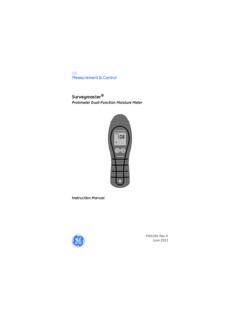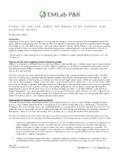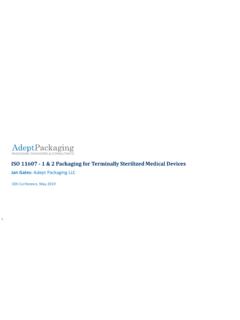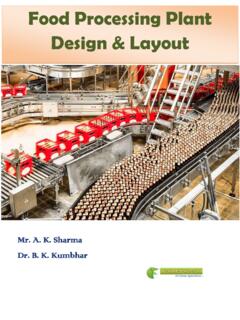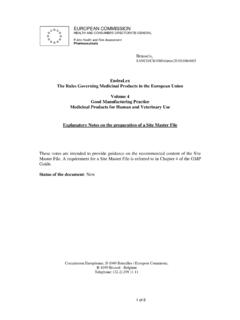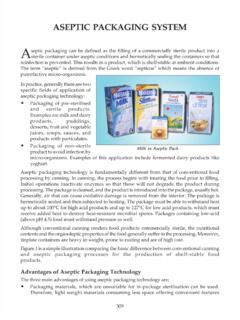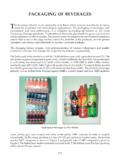Transcription of USP General Chapters <797> & <800> Environmental …
1 Download the PDF: USP General Chapters <797> & <800> Environmental Monitoring Participants will be in listen only mode. 9 (PST) Presented by: Michael Berg, Continuing Education Units (CEUs) To receive a certificate of attendance, you must complete the survey after the webinar: Click on the survey link in the Thank you email. (sent 1 hour after this webinar) Complete survey within 24 hours. You will receive an email in 2-3 weeks when your certificate is ready. Outline Introduction to General chapter USP <797> Personnel training Environmental monitoring and sampling Investigation of excursions and remediation USP <800> Handling of hazardous drugs in healthcare facilities Revision of Chapters <795>, <797> & <800> 4 <795> Pharmaceutical Compounding Nonsterile Preparations <797> Pharmaceutical Compounding Sterile Preparations <800> Hazardous Drugs Handling in Healthcare Settings Update on Appeals Panel Decision General Chapters <795> and <797> The Appeals Panel has granted the appeals to General Chapters <795> and <797> and is remanding the Chapters to the Compounding Expert Committee (CMP EC) with the recommendation for further engagement on the issues raised concerning the beyond-use date provisions.
2 Implications: The currently official Chapters of <795> (last revised in 2014) and <797> (last revised in 2008) remain official. General Chapters <800> The new General Chapter <800> was made official on December 1st, 2019. What is USP <797>? USP-NF establishes standards for medicines, food ingredients and dietary supplements. General Chapter USP <797> establishes best practices and regulations for the production of compounded sterile preparations. 5 Monographs General Chapters General Notices General Chapters establish procedures, methods and practices. Monographs includes the name of the ingredient or preparation; the definition; packaging, storage, and labeling requirements; and the specification. General Notices help with the interpretation of USP NF standards Abbreviations and Terms Abbreviations: USP-NF: United States Pharmacopeia National Formulary CSP: Compounded Sterile Preparation PEC: Primary Engineering Controls BUD: Beyond Use Dating DCA: Direct Compounding Area CAI: Compounding Aseptic Isolator BSC: Biological Safety Cabinet 6 Terms: Clean Room Buffer Area Ante Area Aseptic Processing Preparation Product USP General Chapters General Chapters in the USP-NF Numbered below <1000> Compendium and discretionary State requirements Made applicable through General notices, monographs or another applicable General Chapters below <1000> Numbered <1000> to <1999> Informal Chapters Numbered <2000> and above Dietary supplements 7 Sterile Compounding Sterile compounding.
3 Combining, diluting, pooling, reconstituting or otherwise altering a drug or bulk drug substance to create a sterile preparation. This includes: Altering the dosage form or delivery system of a drug Altering the strength of a drug Combining components or active ingredients Preparing a drug product from chemicals or bulk drug substances 8 USP <797> applies to all persons who prepare and all places where compounded sterile preparations (CSPs) are made for humans or animals. Compounded Sterile Preparations Examples of CSPs: Injections Total Parenteral Nutrition (TPN) Preparations for pulmonary inhalations Baths and soaks for live organs and tissues Irrigations for internal body cavities Implants 9 Scope of USP <797> Practices out of Scope for USP <797> Sterile radiopharmaceutical compounds USP <825> Preparations per approved product labelling Single dose, single patient Labeling must include diluent, strength, storage time, container closure system Immediate use CSPs Single patient prepared from not more than three different sterile products Unused medication from a single dose vial must be discarded Administration must begin within four hours Must be appropriately labelled if not administered by preparer 10 Cleanroom Design 11 Ante Room Buffer Room PEC (ISO 5) ISO 8 ISO 7 Cleanroom.
4 Hazardous Compounding 12 Ante Room Buffer Room PEC (ISO 5) ISO 7 ISO 7 Mission of Chapter <797> Goal of USP <797>: Minimize harm, including death to humans and animals that could result from Microbial contamination (non-sterility) Excessive bacterial endotoxins Variability from the intended strength of active ingredients Physical and chemical incompatibilities Chemical and physical contaminants Use of ingredients of inappropriate quality 13 Revision Risk Categories Risk categories (low risk, medium risk and high risk compounding) have been collapsed in the new revision. However, the 2008 version remains official at this time Immediate and emergency use CSPs are not subject to same requirements 14 Low Risk No more then 3 sterile products CSPs administered within 48 hrs (RT), 14 days (refrigerated), 45 days (frozen) Medium Risk Complex manipulations CSPs administered to more then one patient or same patient multiple occasions BUD: 30 hrs (RT), 9 days (ref.)
5 , 45 days (frozen) High Risk Produced with non-sterile components or process exposed to worse than ISO5 for >1 hr Requires terminal sterilization BUD: 24 hrs (RT), 3 days (ref.), 30 days (frozen) Any person handling CSPs and/or accessing the compounding area must be trained A designated person is responsible for overseeing the training program Visual observation, training and testing of compounding personnel may be performed by A designated person or an assigned trainer Written training program including: Specifics of required competencies Frequency of training Process for evaluating competencies Visual observation, written or electronic test Documentation of training results Personnel Training 15 Personnel Training (cont d) Personnel must demonstrate and be tested for core competencies initially and every 12 months in: 16 Hand hygiene Garbing Cleaning and disinfection Calculations, measuring and mixing Aseptic technique Achieving and/or maintaining sterility and apyrogenicity Use of equipment Documentation of compounding process Principles of HEPA-filtered unidirectional airflow within the ISO 5 area Proper use of primary engineering controls (PECs) Principles of movement of materials and personnel within the compounding area Personnel Training Microbial Testing Gloved fingertip testing Press all fingers of one hand including thumb on a media plate ( TSA w/ polysorbate 80 & lecithin) after performing hand hygiene and garbing procedure.
6 Initial qualification three times with no growth on either plate (left and right hand). Continued qualification testing every 6 months with a maximum of 3 cfu for both hands combined. 17 Isolator box: test sterile gloves placed over the equipment gloves. Personnel Training Microbial Testing (cont d) Media fill testing Simulation used to qualify processes and personnel engaged in sterile compounding to ensure that the processes and personnel are able to prepare CSPs without contamination. Initial qualification and every 6 months thereafter. 18 Replace ingredients with soybean-casein digest medium (TSB) and perform most challenging procedures that the trainee may encounter. Media fill test kits may be used. Training Module Frequency Threshold Testing of all core competencies Every 12 months Observation, test scores, etc. Gloved fingertip testing1 Every 6 months Zero cfu initially (3 times), 3 cfu for continuous qualification Media fill testing2 Every 6 months No growth 19 Personnel Training Summary 1 Incubation 30 C to 35 C for no less than 48 hours (2008 version) 2 Incubation 20 to 25 or at 30 to 35 for a minimum of 14 days (2008 version) Facility Design and Environmental Monitoring Sterile compounding facilities must be designed, outfitted, and maintained properly to minimize the risk of contamination of CSPs.
7 Required air quality for various areas is achieved via: Facility design Primary engineering controls (PECs) Secondary engineering controls (SECs) HEPA filtration, ventilation, air flow 20 Cleanroom Design Cleanroom suite ISO-classified ante-room and buffer room is separated from the surrounding unclassified areas of the facility. Air flow - specific design and monitoring required. Ante room with line of demarcation for clean and dirty area or two ante rooms required. Segregated compounding area (SCA) PEC may be located within an unclassified area, without an ante-room or buffer room. Must be located away from windows, doors, traffic etc. which may adversely affect air quality. 21 Air quality Cleanroom Suite 22 Ante Room Buffer Room PEC (ISO 5) ISO 8 ISO 7 ISO Class m m m m 1 m 5 m FED STD 209 Class ISO 1 10 2 ISO 2 100 24 10 4 ISO 3 1,000 237 102 35 8 1 ISO 4 10,000 2,370 1,020 352 83 10 ISO 5 100,000 23,700 10,200 3,520 832 29 100 ISO 6 1,000,000 237,000 102,000 35,200 8,320 293 1000 ISO 7 352,000 83,200 2,930 10000 ISO 8 3,520,000 832,000 29,300 100000 ISO 9 35,200,000 8,320,000 293,000 Direct Compounding Area Buffer Room Ante Room Total Particle Counts Air flow (2008 revision) For rooms providing a physical separation through the use of walls, doors, and pass-throughs, a minimum differential positive pressure of to water column is required.
8 No less then 30 ACPH for buffer and ante rooms. 23 Air Flow Air change requirements for SECs in new revision (2019) 24 Compounding Area Air Change Per Hour (ACPH) Unclassified SCA No requirement ISO class 7 room(s) 30 ACPH ISO class 8 room(s) 20 ACPH In a cleanroom suite the minimum positive differential pressure from cleanroom classification with higher quality to the next ( ISO7 to ISO8) must be at least inch water column. Pressure differential must be monitored, recorded and reviewed. Air Monitoring Total Particle Count 25 ISO 14644: Rule of thumb: # samples=Square Root of the clean room area, at least 1 minute & 2 Liters / sample Area [m2] less than or equal to Minimum # of samples locations (90% confidence level) 2 1 10 5 32 8 56 11 104 16 190 21 500 26 Air Monitoring of Viable Particles 26 Air sampling in each classified area every 6 months (same frequency as certification of PEC) Volumetric sampling under dynamic conditions: 1000 liters minimum for all areas 2008 version: 400 to 1000 liters During typical operating conditions every six months.
9 Use General microbiological growth medium ( TSA). Air Sampling In addition to routine air monitoring every 6 months testing is also performed In conjunction with the certification of new facilities and equipment After any servicing of facilities or equipment In response to identified problems ( , positive growth in sterility tests of CSPs) In response to identified trends ( , repeated positive gloved fingertip and thumb sampling results, failed media fill testing, or repeated observations of air or surface contamination) In response to changes that could impact the sterile compounding environment ( , change in cleaning agents) 27 Air Sampling Media and Incubation Media: A General microbiological growth media that supports the growth of bacteria and fungi must be used ( , TSA). For high risk compounding use fungal media ( , MEA) in addition. Incubation: 30 C to 35 C for 48 to 72 hours (TSA) 26 to 30 for 5 to 7 days (MEA).
10 28 Air Sampling Thresholds 29 ISO Class Air Sampling Action Levels (CFU/m3)* 5 >1 7 >10 8 >100 * All action levels must be based on sampling in the vicinity of exposed materials/articles during compounding operations. Action levels for classified areas (USP <797>) Surface Sampling Surface sampling routinely (typically done with air sampling and/or personnel qualification testing). All classified areas and pass-through chambers connecting to classified areas including The interior of the PEC and the equipment contained in it Staging or work area(s) near the PEC Frequently touched surfaces When conducted, surface sampling must be performed at the end of compounding activity or shift, but before the area has been cleaned and disinfected. 30 Surface Sampling (cont d) 31 Contact Plates or Paddles (24 36 cm2) Easy to use Accurate Less handling Swabs Can sample curved surfaces Convenient Less expensive Surface Samples Media and Incubation 32 Media: A General microbiological growth media that supports the growth of bacteria and fungi ( , TSA) containing neutralizing additives ( , lecithin and polysorbate 80).



